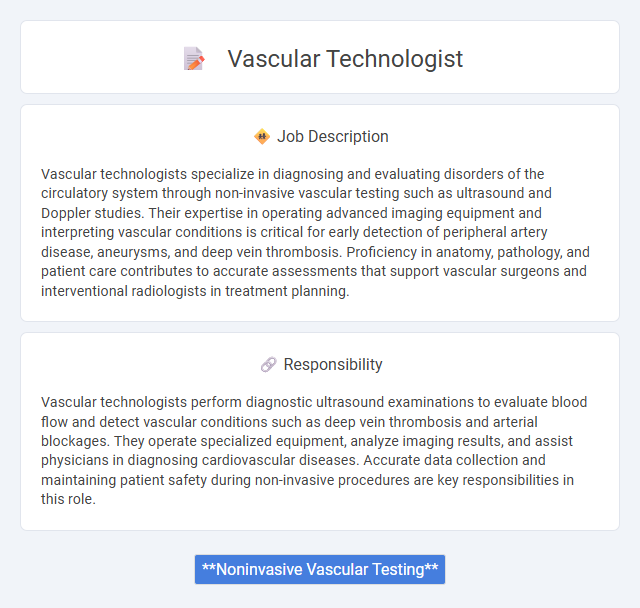
Vascular technologists specialize in diagnosing and evaluating disorders of the circulatory system through non-invasive vascular testing such as ultrasound and Doppler studies. Their expertise in operating advanced imaging equipment and interpreting vascular conditions is critical for early detection of peripheral artery disease, aneurysms, and deep vein thrombosis. Proficiency in anatomy, pathology, and patient care contributes to accurate assessments that support vascular surgeons and interventional radiologists in treatment planning.
Individuals with a strong interest in anatomy, physiology, and medical technology are likely to be well-suited for a career as a vascular technologist. Those who have good hand-eye coordination, attention to detail, and the ability to work with patients in sometimes stressful medical environments might find this role appropriate. People who prefer hands-on technical work and have the patience to conduct thorough vascular assessments could probably excel in this profession.
Qualification
A vascular technologist must possess specialized certification such as the Registered Vascular Technologist (RVT) credential awarded by the American Registry for Diagnostic Medical Sonography (ARDMS). Completion of an accredited vascular technology program and proficiency in using ultrasound equipment to assess blood flow and diagnose vascular conditions are essential qualifications. Strong knowledge of anatomy, physiology, and pathology related to vascular systems enhances diagnostic accuracy and patient care.
Responsibility
Vascular technologists perform diagnostic ultrasound examinations to evaluate blood flow and detect vascular conditions such as deep vein thrombosis and arterial blockages. They operate specialized equipment, analyze imaging results, and assist physicians in diagnosing cardiovascular diseases. Accurate data collection and maintaining patient safety during non-invasive procedures are key responsibilities in this role.
Benefit
A career as a vascular technologist probably offers competitive salaries and strong job security due to the growing demand for diagnostic vascular services. There may be opportunities for professional growth and specialization in advanced ultrasound techniques, enhancing career advancement prospects. Benefits might include working in diverse healthcare settings, contributing to critical patient care by diagnosing vascular conditions early.
Challenge
The role of a vascular technologist likely involves significant challenges related to accurately diagnosing vascular conditions using specialized imaging equipment. Complex cases may demand advanced problem-solving skills and a deep understanding of vascular anatomy and pathophysiology. There is a probable need to stay updated with evolving technology and techniques to ensure precise patient assessments.
Career Advancement
Vascular technologists specializing in diagnostic imaging and patient care can advance their careers by obtaining certifications such as Registered Vascular Technologist (RVT) and gaining expertise in specialized procedures like duplex ultrasonography and arterial testing. Leadership roles, such as vascular lab manager or clinical educator, become accessible with experience and continuous professional development. Pursuing advanced education in vascular technology or related healthcare fields further enhances opportunities for higher responsibility and salary growth.
Key Terms
Noninvasive Vascular Testing
Vascular technologists specialize in noninvasive vascular testing to evaluate blood flow and detect vascular conditions using ultrasound, Doppler, and other imaging techniques. Their expertise ensures accurate assessment of arterial and venous systems, aiding in diagnosis and guiding treatment for diseases like deep vein thrombosis and peripheral artery disease. Proficiency in these tests enhances patient outcomes by providing critical data without the need for invasive procedures.
 kuljobs.com
kuljobs.com